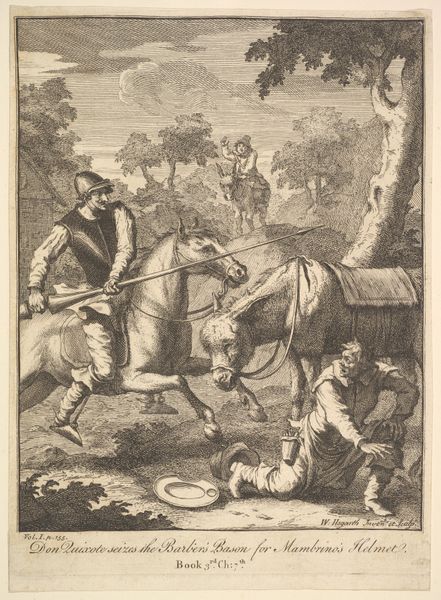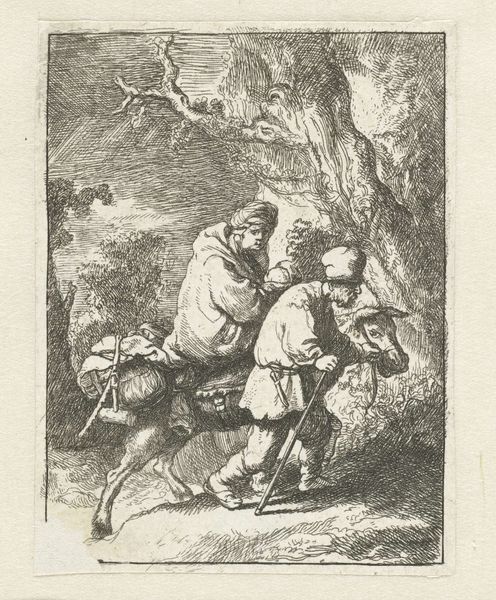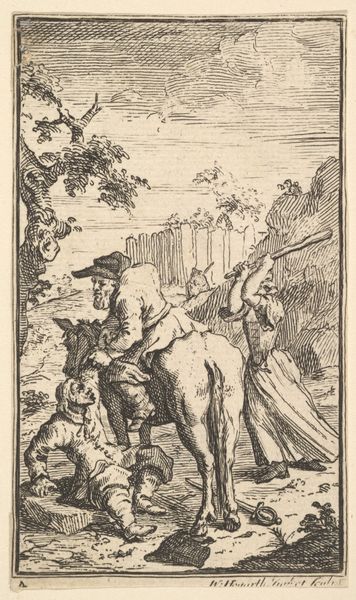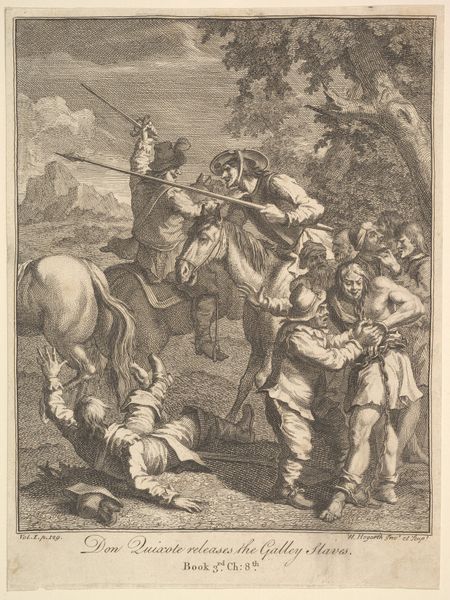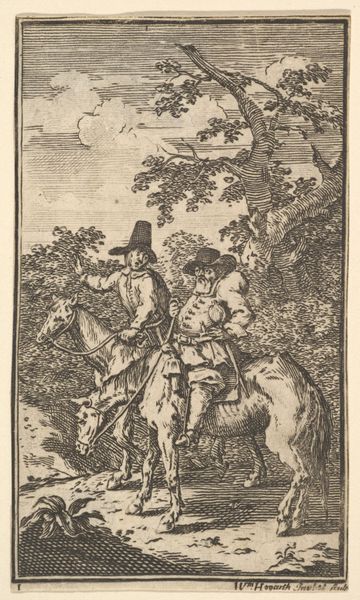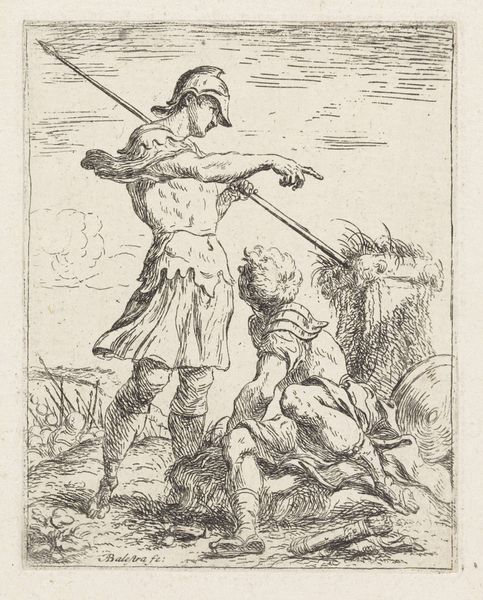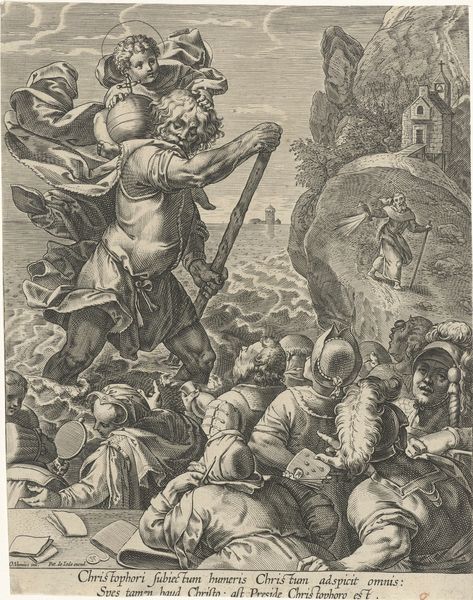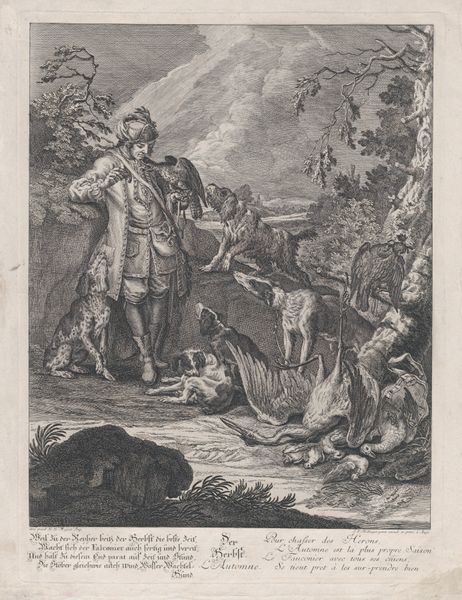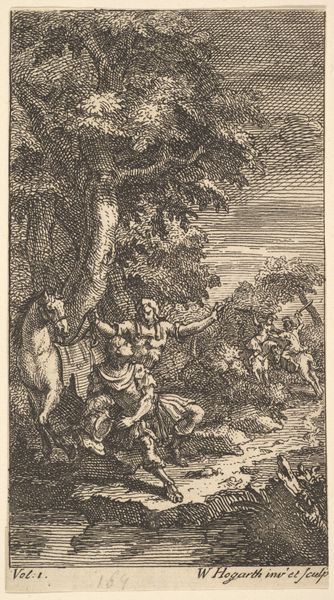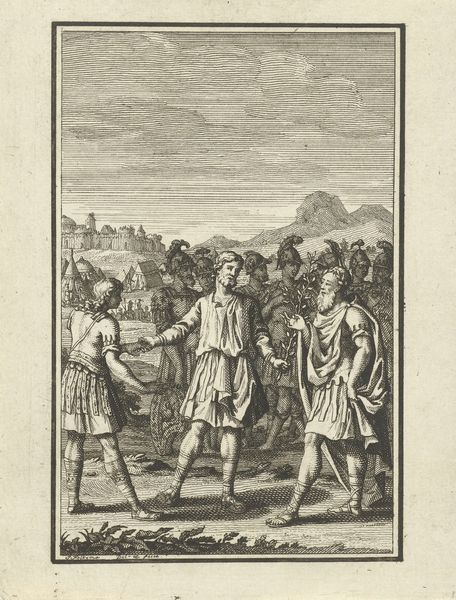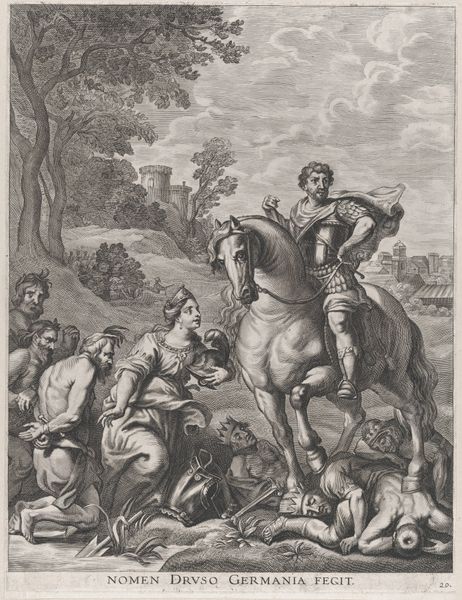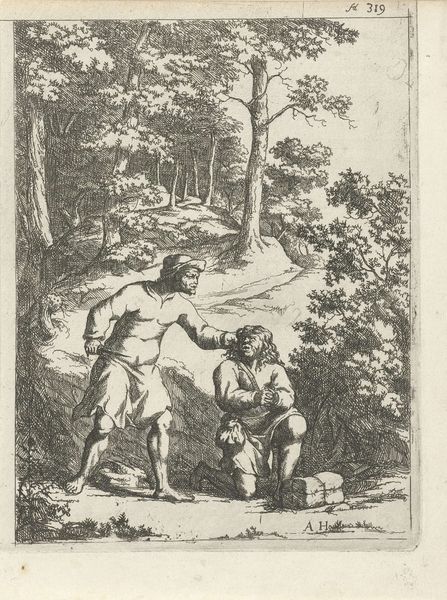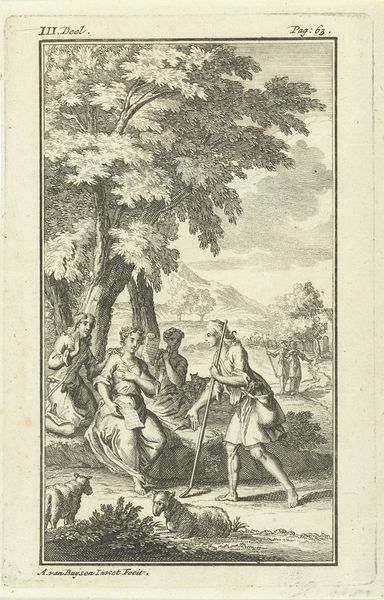
Don Quixote and the Knight of the Rock (Six Illustrations for Don Quixote) 1756
0:00
0:00
drawing, print, etching, engraving
#
drawing
#
narrative-art
#
baroque
# print
#
etching
#
figuration
#
line
#
engraving
Dimensions: sheet: 9 7/16 x 7 in. (24 x 17.8 cm)
Copyright: Public Domain
Curator: What strikes me first is the dynamism—that angular, restless line quality typical of the Baroque, even within the confines of a small engraving. Editor: Exactly, and that energy focuses the eye despite the understated grey scale. The work before us, “Don Quixote and the Knight of the Rock,” rendered in 1756 by William Hogarth, resides here at the Metropolitan Museum of Art. This etching embodies narrative through figuration. But more, this speaks to the symbolic weight of its literary origin. Curator: Absolutely, look at how Hogarth visualizes this moment of encounter. Quixote appears bewildered, facing the “Knight” who feigns chivalry, gesturing wildly while two shepherds restrain a goat—a loaded animal symbol we've seen echoing themes of sacrifice and rural identity throughout history. Editor: And observe how Hogarth directs the viewer’s attention. See how those stark diagonal lines lead directly from Don Quixote to the central goat and his captors. Hogarth is truly a master of leading the eye despite an image of such limited tone. Curator: Consider the cultural memory at play here. “Don Quixote” became a vessel for ideas about nobility, satire, and illusion versus reality. Hogarth taps into that deep well of symbolic meaning. Quixote’s tilting at windmills is transformed here. This strange tableau represents how perception itself can be manipulated. That central tension permeates society still. Editor: And I think that Hogarth conveys those thematic nuances through composition. The figures are almost cartoonish in their exaggerated poses, making the themes obvious through formal, visual representation. The artist balances realism with visual comedy to make sure all viewers recognize the source material. Curator: Perhaps...but is Hogarth critiquing our collective susceptibility to grand narratives? The very notion of truth in a constructed world. That resonates across time. He prompts us to investigate the symbols we blindly embrace. Editor: Certainly the figures embody easily understandable symbols and themes, which Hogarth clearly intended in creating this very intriguing plate. Curator: It’s a brilliant capsule of human delusion captured in a relatively simple scene. Editor: Agreed. Hogarth has successfully presented a moment charged with meaning.
Comments
No comments
Be the first to comment and join the conversation on the ultimate creative platform.
